读图 /收藏级艺术微喷, 图像拼贴 / 51*61 cm*12件 /无反光玻璃 铝框装裱 / 2021
Picture Reading / Mixed media collage / 51*61 cm*12pieces / AG-Glass Aluminum frame /2021
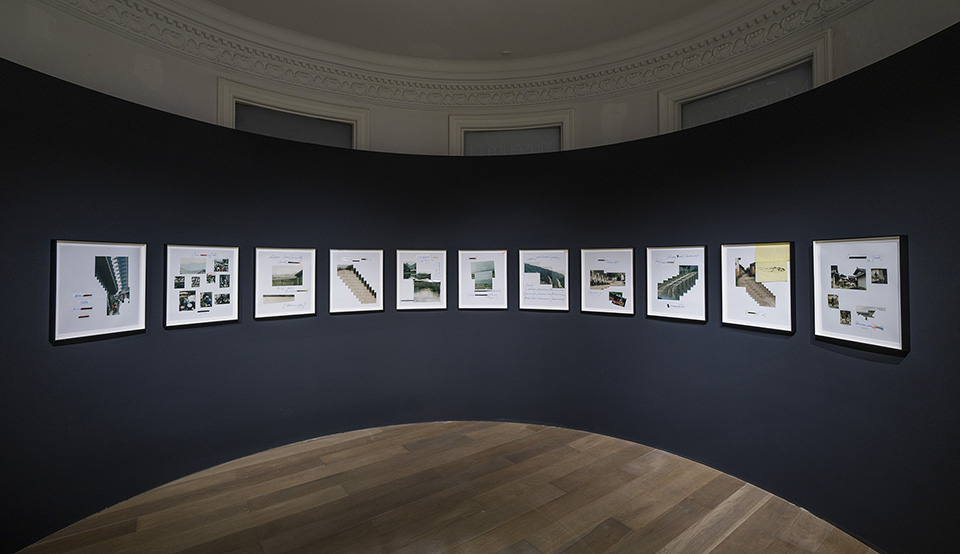
Installation view of RAM Highlights 2022: “The Good Life”, Rockbund Art Museum, Shanghai,2022. Photo: CUI Junjun
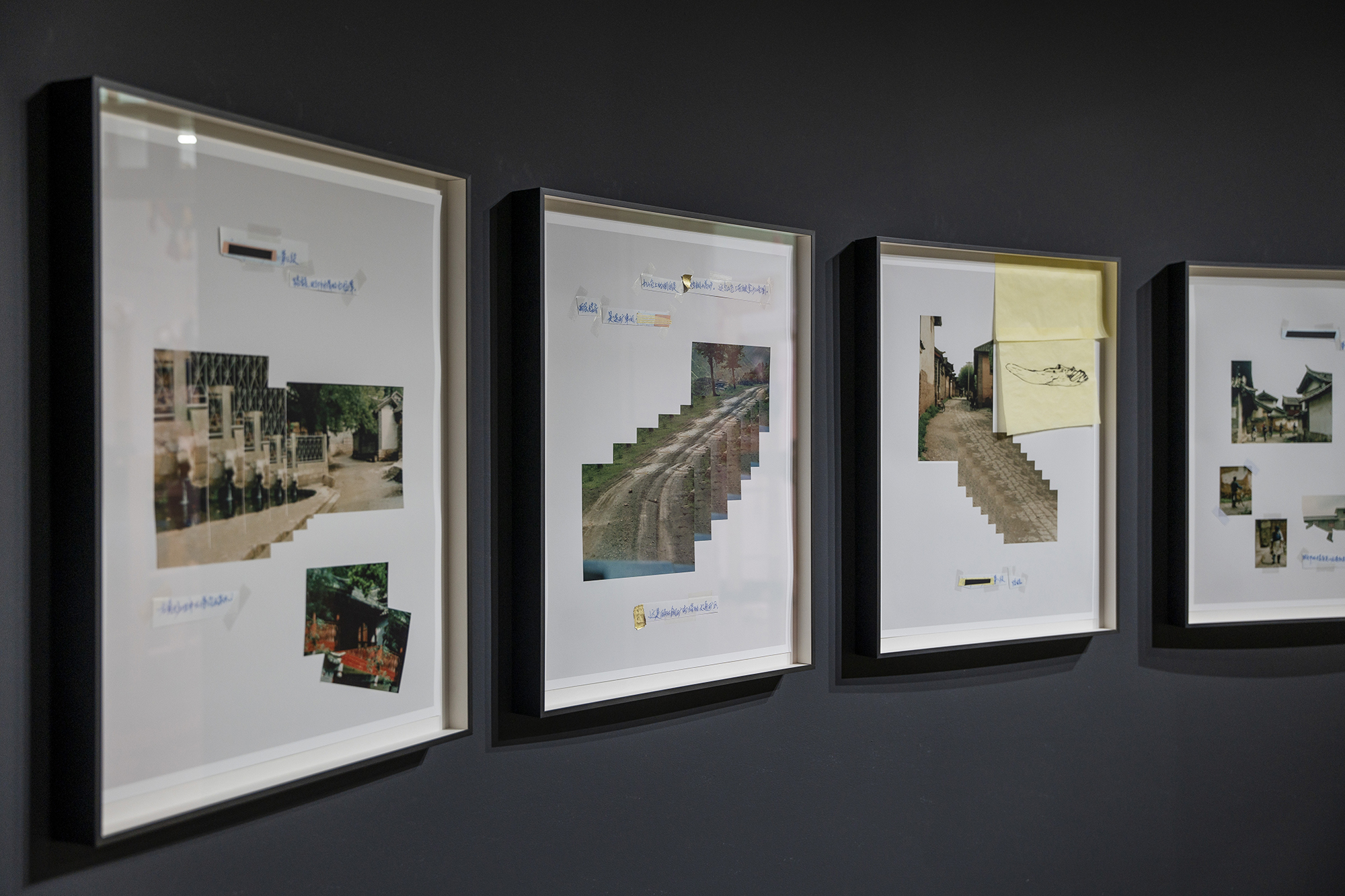
Installation view of RAM Highlights 2022: “The Good Life”, Rockbund Art Museum, Shanghai,2022. Photo: CUI Junjun
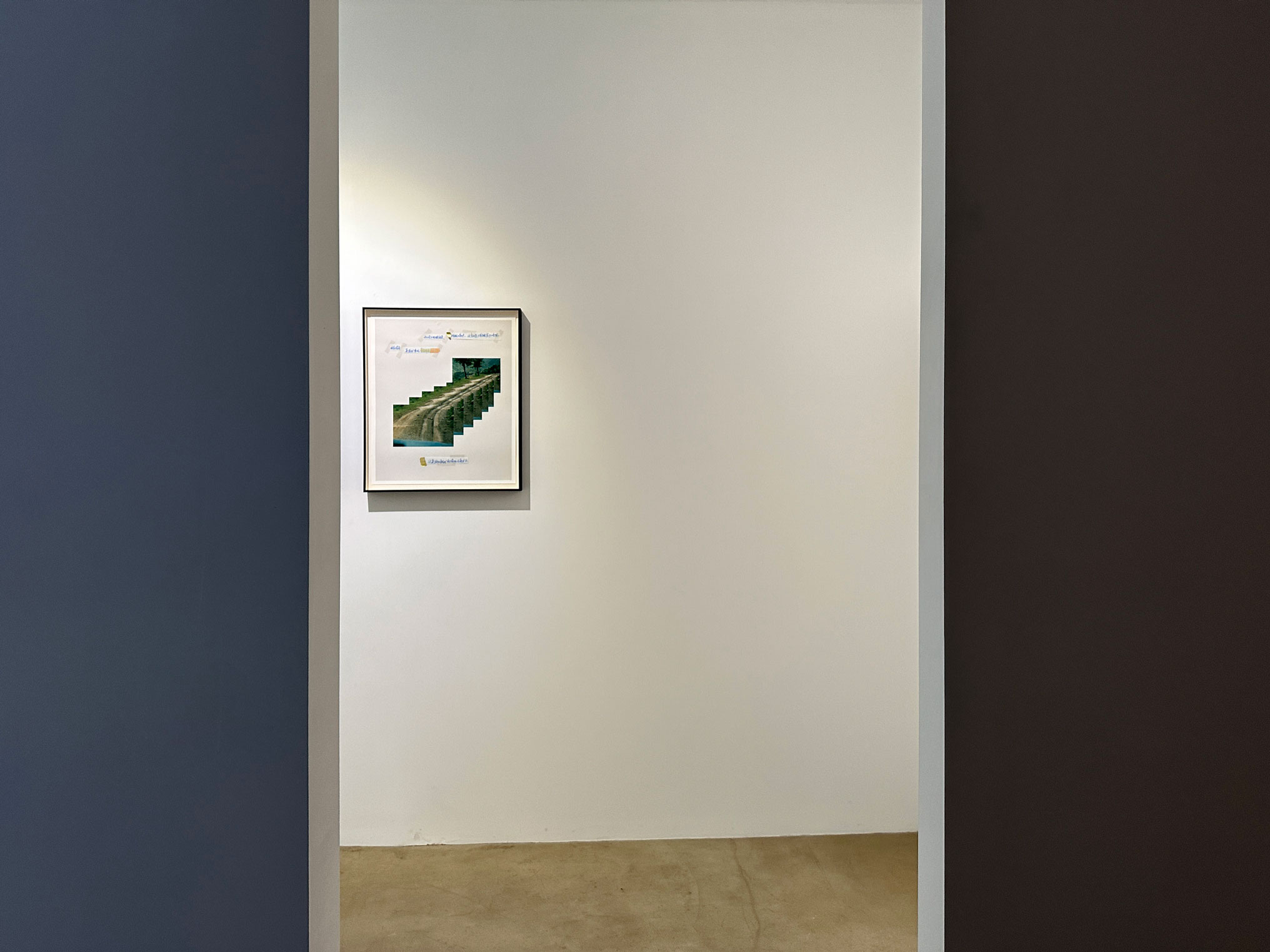
2024 外部空间现场/Installation View in Outside Art Space Beijing
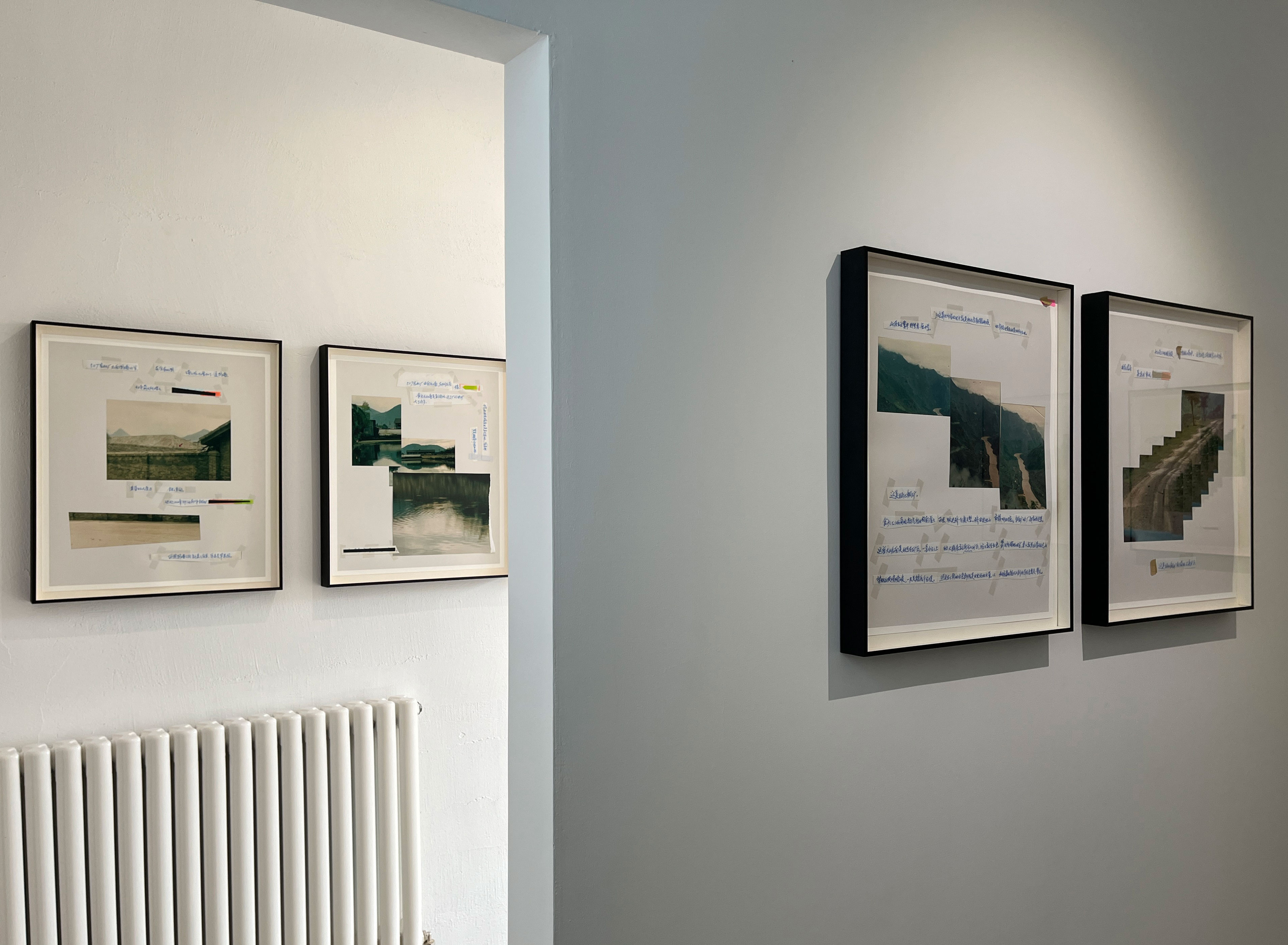
2024 外部空间现场/Installation View in Outside Art Space Beijing
《读图》12张照片拼贴作品是我追随的第三个故事。上海人徐洪慈从1957年开始历经四次越狱,最后逃亡到外蒙古国,并且在那里娶妻生子。80年代初随着其冤案的昭雪,他得以带着家人返回上海。我有幸得到了一批他于九十年代末重返苦役所在地--丽江所拍摄的彩色照片,每一张背后都由他亲笔书写了地点与经历。
我反复地观看它们,在手上,在屏幕中。图片跟随着鼠标滚轮的滑动放大缩小,在屏幕里,在移动中我试图辨认那些图像中的细节。一个近处的背影,一座远处的山峰,脚下被辗平的石板路。亘古不变的自然景观,旧时的丽江街景与那些陌生的面孔。我试着在想象中拼凑亲历的感受,并且为这一追述划下了一条线——那就是必须足够诚实。在面对这些图片的时候我希望将自己的角色转化为一个传递者,将一个故事,一段历史,一些记忆通过我有限的编排与裁切传递给观看的人。
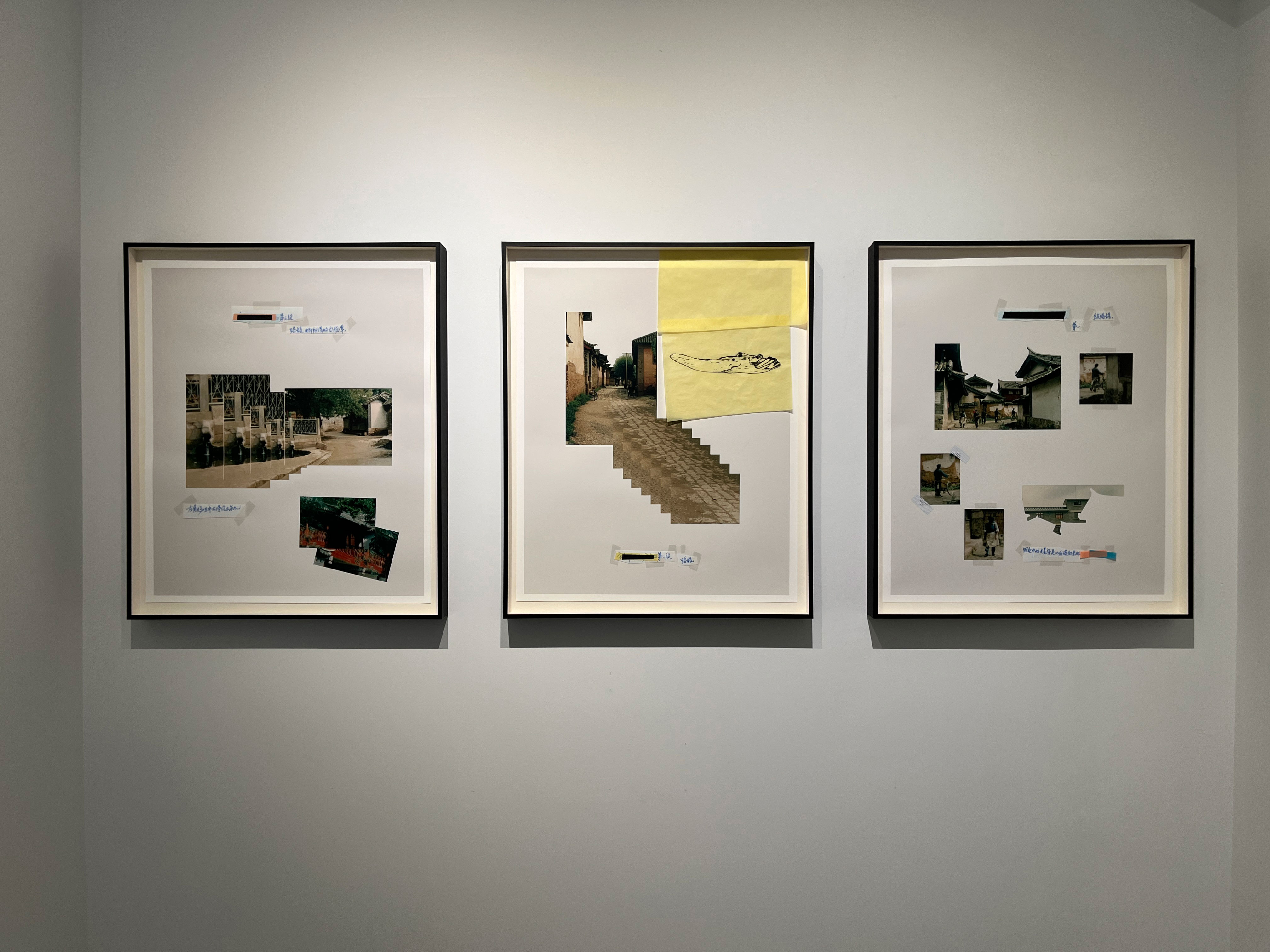
2024 外部空间现场/Installation View in Outside Art Space Beijing Photo:Dingding
我选择了其中的12张照片作为再次编辑的基础,在这组被编排裁剪的图片里展示了三段徐洪慈的亲历线索。主线是其被带去广场公审然后游街示众所途径的地点,街角,广场与大道。其中又穿插了徐最终成功越狱的监狱—507农机厂的外围视角以及他曾经苦役劳动过的铜矿远眺。每一张图片被裁剪后又重新拼贴,调用着屏幕阅读的经验并且通过软件将图像重组,这一视觉化的处理来自直觉上对于图像解读的延伸。
对于图像与文字的理解分处于大脑中的不同区域,这一现实提示着我们文本与图像原本并不能互译,在阿莱达.阿斯曼的描述中二者虽然分离却又具有强烈的互相解释的诉求。照片背后的文字被我切割后与图像并置粘贴在同一平面。地点,事件以确切与具体的方式在此相遇。文字使得地点回温,图像使得记忆被物化。 这一并置将原本沉默的仅仅对拍摄者耳语往昔的图像与文本被重塑为能够召唤观看者想象的叙述主体。
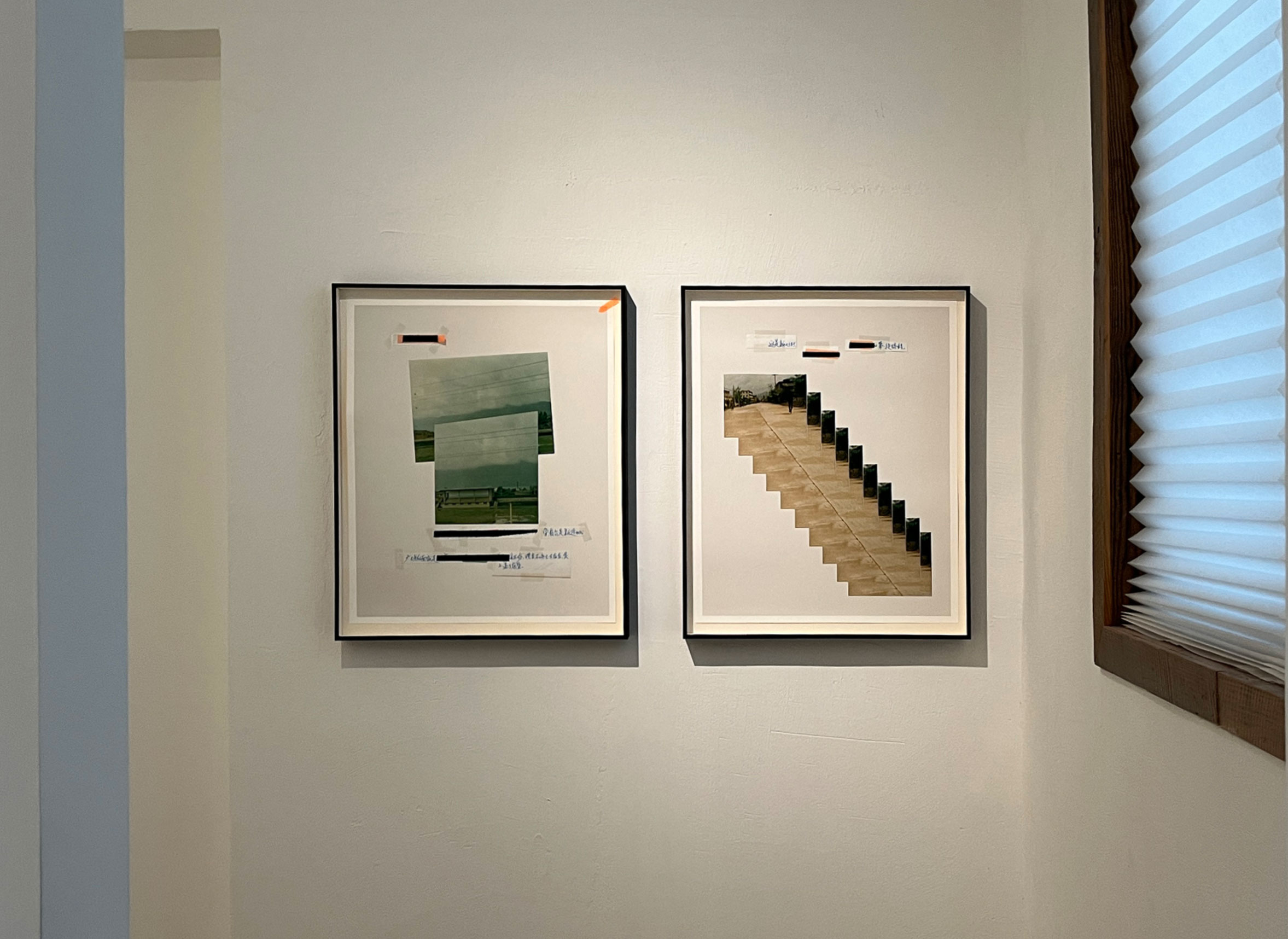
2024 外部空间现场/Installation View in Outside Art Space Beijing
故地重游的徐洪慈虽然带着“胜利者”的姿态,然而克制不住的控诉依然流露在文字之间。为了应对展览审查我使用了便签纸将部分语句覆盖,这些色彩艳丽的便签成为了展示的游戏,同样回应着徐洪慈及其所代表的那些试图逾越意识形态边界的往事在今天特殊公共语境下所陷入的沉默。
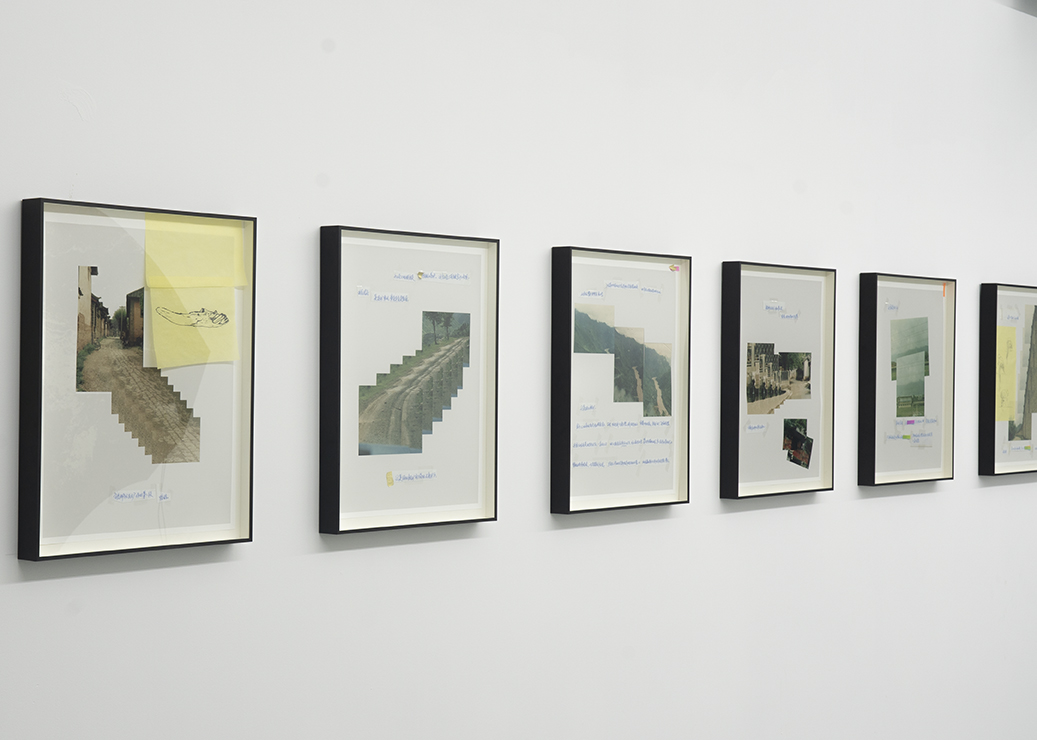 2021 现场/Installation View in Snap Shanghai
2021 现场/Installation View in Snap Shanghai
The twelves photo collages in the Picture Reading series consist of the third story I follow. Xu Hongci, a Shanghainese who broke free from jail four times since 1957, eventually escaped to Outer Mongolia, where he settled down with his wife and children. He returned to Shanghai with his family in the early 1980s when he was exonerated. I was fortunate enough to obtain a collection of color photographs he had taken when he revisited the hard-labor camp in Lijiang in the late 1990s. His handwritten notes of the location and personal experience were on the back of each photograph.
I looked at them over and over, in my hands and on the screen. I zoomed in and out of the images while scrolling with a mouse. I moved them around on the monitor to identify the details in these images. A close-up back, a distant mountain, a stone path that has been flattened underfoot. The constant nature of the landscape, the old Lijiang streetscape, and the unfamiliar faces. I try to piece together what it was like to experience it in person in my imagination.
I selected twelve of these photographs as the basis for re-editing to show three clues of Xu Hongci's lived experience. The main thread strings the locations along the path, including street corners, squares, and roads leading to the square of his public trial, and then paraded through the streets. Interspersed with these are peripheral views of the prison where Xu finally escaped from prison successfully – the 507 Agricultural Machinery Factory (Self-education labor prison), and a distant view of the copper mine where he worked in forced labor. Each image was cropped and then re-collaged. First, I drew from screen-reading experience to reorganize the image using various editing software - visual processing comes from an intuitive extension of pictorial interpretation. Then, I cut and juxtaposed the text behind the photographs on the same side as the images. The events and places meet again on the same surface, precisely and concretely.
The fact that the understanding of images and words is divided in different areas of the brain suggests that text and images are not originally translatable.In Aleida Assmann's description, the two are separate but have a strong desire to interpret each other. The text behind the photographs is cut and pasted on the same surface as the images. Place and event meet here in a precise and concrete way. The text warms up the place, while the image materializes the memory. This juxtaposition recasts the images and texts, which were originally silent and merely whispered to the photographer, into narrative subjects that can summon the imagination of the viewer.
On his revisit, although Xu Hongci carried the disposition of a "victor," his unmoored accusations still flowed out of his writing. His use of specific rhetoric may seem somewhat "sensitive." I used sticky notes to cover them to avoid unnecessarily "censorship" when showing them locally. These brightly colored sticky notes become a game of presentation, while they also respond to the silence in which Xu and the past he represents of those who tried to escape the borders of ideological are caught in today's political context.
The following English and Chinese text are listed in order shown on collage.
 从看守所押往民主广场接受公审的第一段路程
从看守所押往民主广场接受公审的第一段路程
The first part of the road from the detention center to Democracy Square for the public trial。
照片中的楼房是以后造起来的公安局。
The building in the photograph is the Public Security Bureau that was later built.
 被押往民主广场的第二段路程
被押往民主广场的第二段路程
The second part of the road to Democracy Square.
 被押往民主广场的第三段路程,也即所谓的白龙潭。
被押往民主广场的第三段路程,也即所谓的白龙潭。
The third part of the road to Democracy Square is the White Dragon Pool.
左角龙嘴中不停流出泉水。
There is a spring of water constantly flowing from the dragon's mouth on the left.
 小山包上的烟囱是炼钢小高炉。这个山包三面被金沙江围绕。
小山包上的烟囱是炼钢小高炉。这个山包三面被金沙江围绕。
The chimney on the hill is a small steel furnace. Three sides of the hill are wrapped around by the Jinsha River.
两层楼房是选矿车间,黄色平房是监房。
The double-storey building is the Mineral processing workshop and the yellow bungalow is the prison.
这是丽江铜矿南端的文通矿区。
This is the Wentong Mining Area at the southern end of the Lijiang Copper Mine.

山顶在云雾中,那里有一所小学。红色箭头处就是那位像骷髅那样的年轻女农民的家的所在地。
The mountain top is buried in the clouds, where there is a primary school. The red arrow points at the the home of a young female farmer who looks like a skeleton.
这是丽江铜矿。
This is the Lijiang Copper Mine.
金沙江汹涌的激流自北向南滚滚而去,跃进桥飞度天堑。桥西面的市镇叫树底。铜矿的厂部就在这里。
The raging rapids of the Jinsha River flows from north to south, and the Yue Jin (Leap Forward)Bridge flies across the rift valley.The town to the west of the bridge is called Shudi(the bottom of the tree). The copper mine headquarters is located here.
这座大山后面是拉马古矿区。一朵白云之上的大断层就(是)南方山矿区,坑口就在红色箭头所指的地方,本人在此劳动过。
Behind this mountain is the Lamagu Mining Area. The enormous fault above the white cloud is the South Mountain Mining Area, the mine entrance is where the red arrow points, and I have labored.
山势极为陡峭险峻,一失足将成千古恨。照片左下角的白色斜线是水电站的水管。从树底翻越大山到拉马古去要走一整天。
The mountain is extremely steep and precipitous, and a single mistake will make it a long way down. The white diagonal line at the bottom left of the photo is the water pipe for the hydroelectric power station. It is a full day's walk from the Shudi over the mountain to Lamagu.
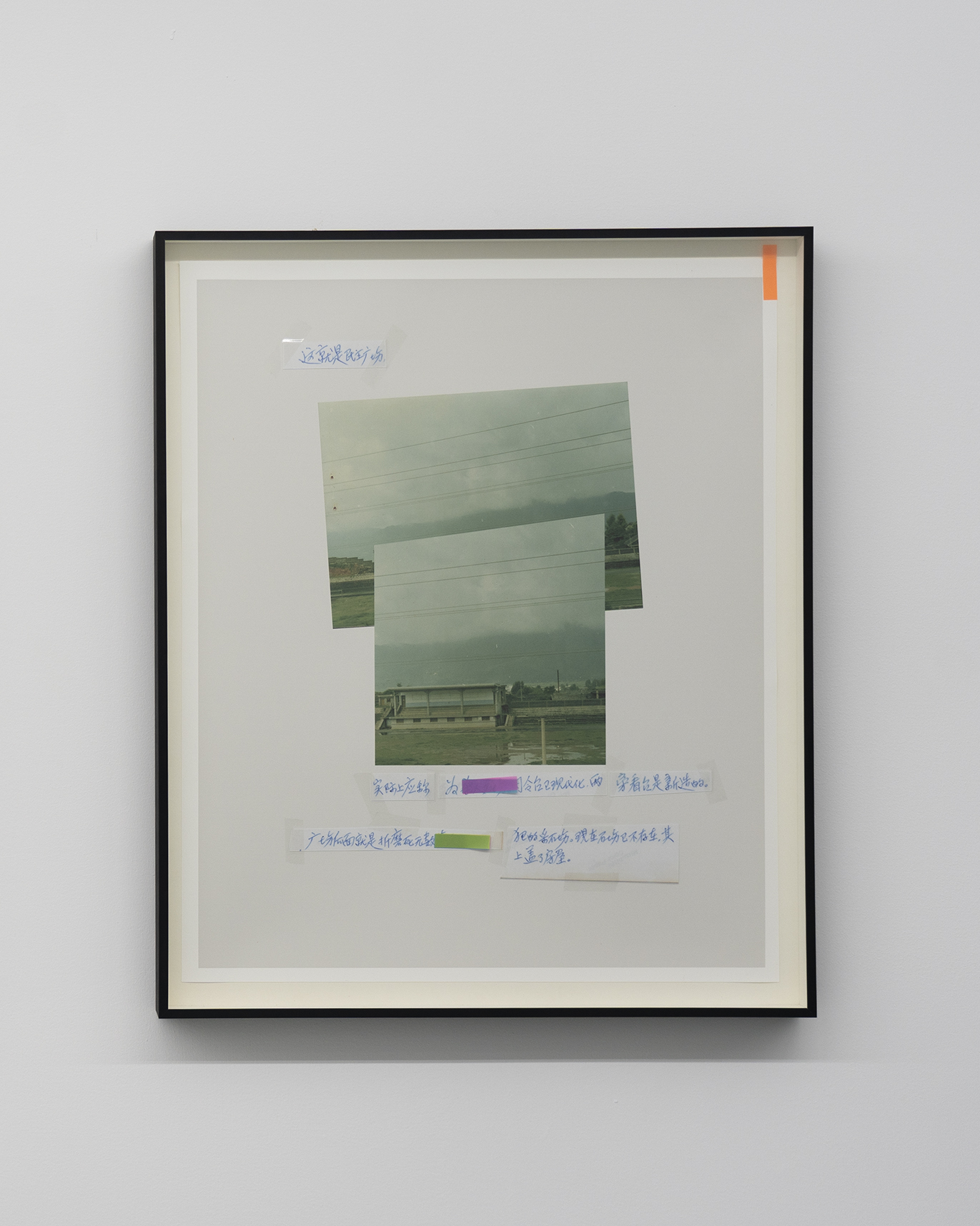
这就是民主广场,
This is Democracy Square,
实际上应称为杀人广场,司令台已现代化,两旁看台是新造的。
Or it should actually be called Murder Square, where the Commandant's Terrace has been modernised and the stands on either side are newly built.
广场后面就是折磨死无数劳改犯的采石场。现在石场已不复存在,其上盖了房屋。
Behind the square is the stone quarry where many prisoners were tortured and killed. The quarry no longer exists and houses have been built on it.
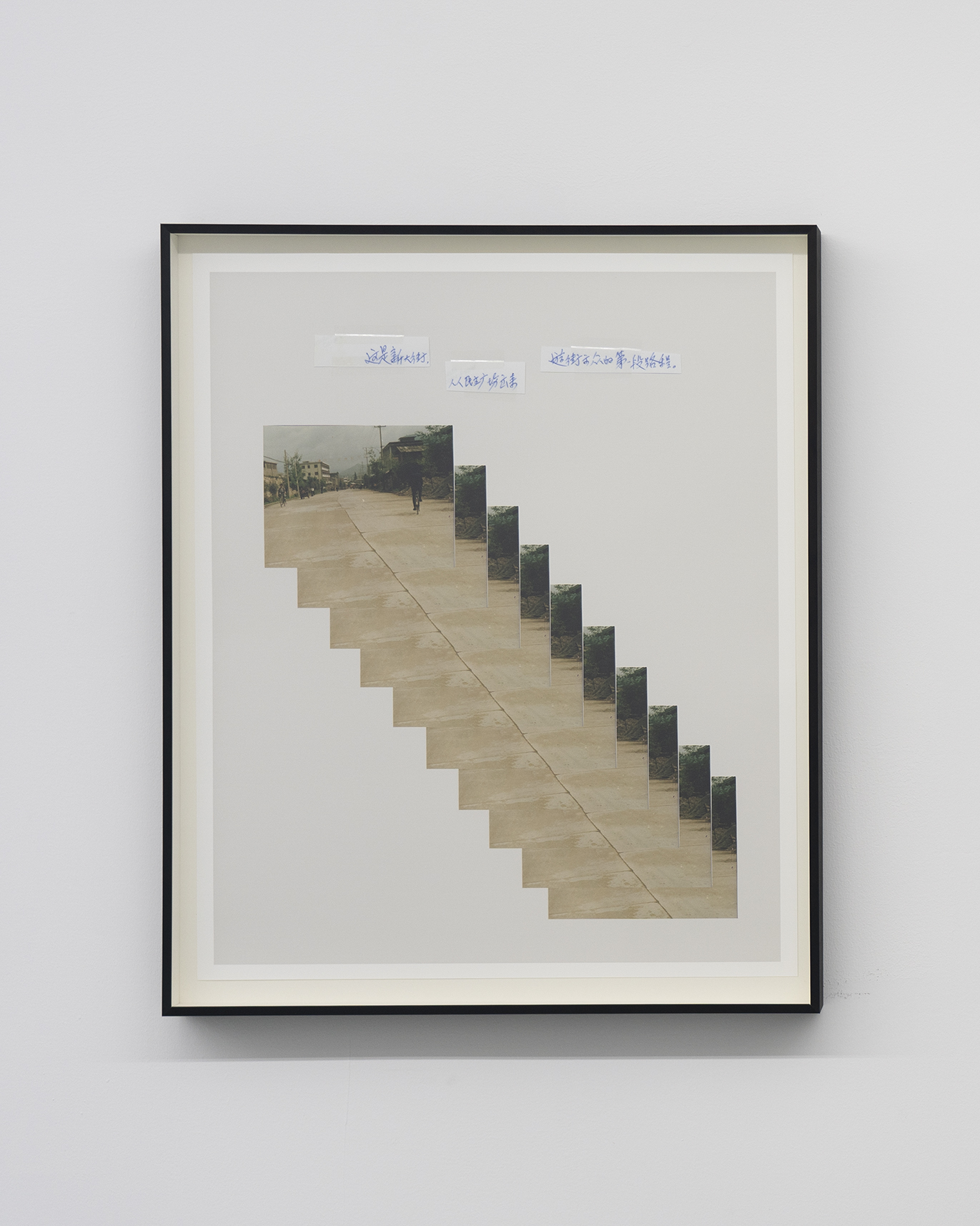 这是新大街,从民主广场出来游街示众的第一段路程。
这是新大街,从民主广场出来游街示众的第一段路程。
This is the New Street, the first part of the parade coming out of Democracy Square.
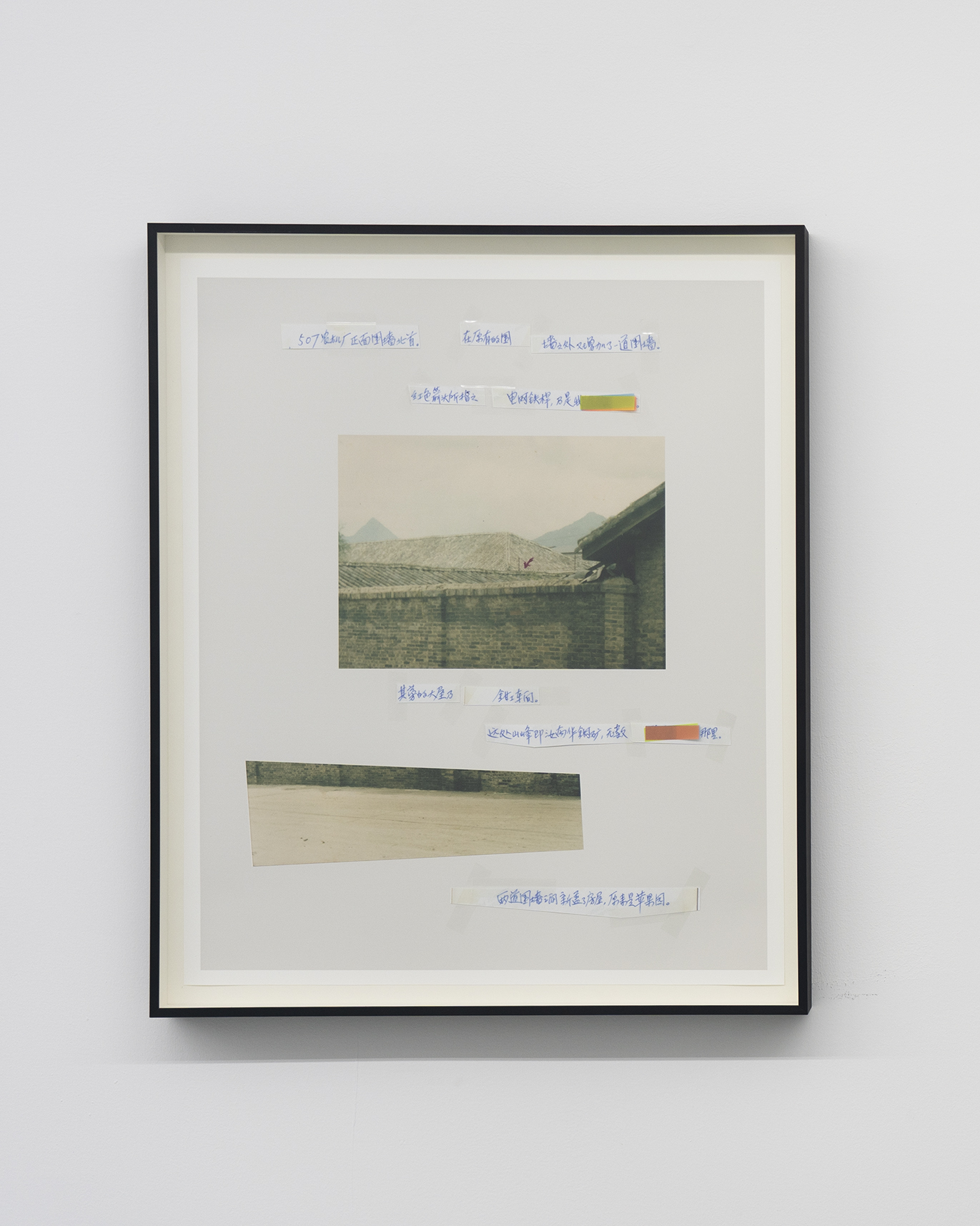 507农机场正面围墙北首。在原有的围墙外又增加了一道围墙。
507农机场正面围墙北首。在原有的围墙外又增加了一道围墙。
The northern tip of the 507 Agricultural Machinery Factory's front wall. An additional wall has been build ouside the original one.
红色箭头所指之电网铁杆,乃是我越狱处。
The red arrow pointing to the gridiron pole are where I broke out of the jail.
其旁的大屋乃钳工车间。
The large house next to it is a clamping workshop.
远处山峰即汝南华铜矿,无数政治犯死在那里。
The distant mountain peaks is where the copper mines of Ru Nanhwua, where countless political prisoners died.
两道围墙之间新盖了房屋,原来是苹果园。
A new house has been built between the two walls, which used to be an apple orchard.
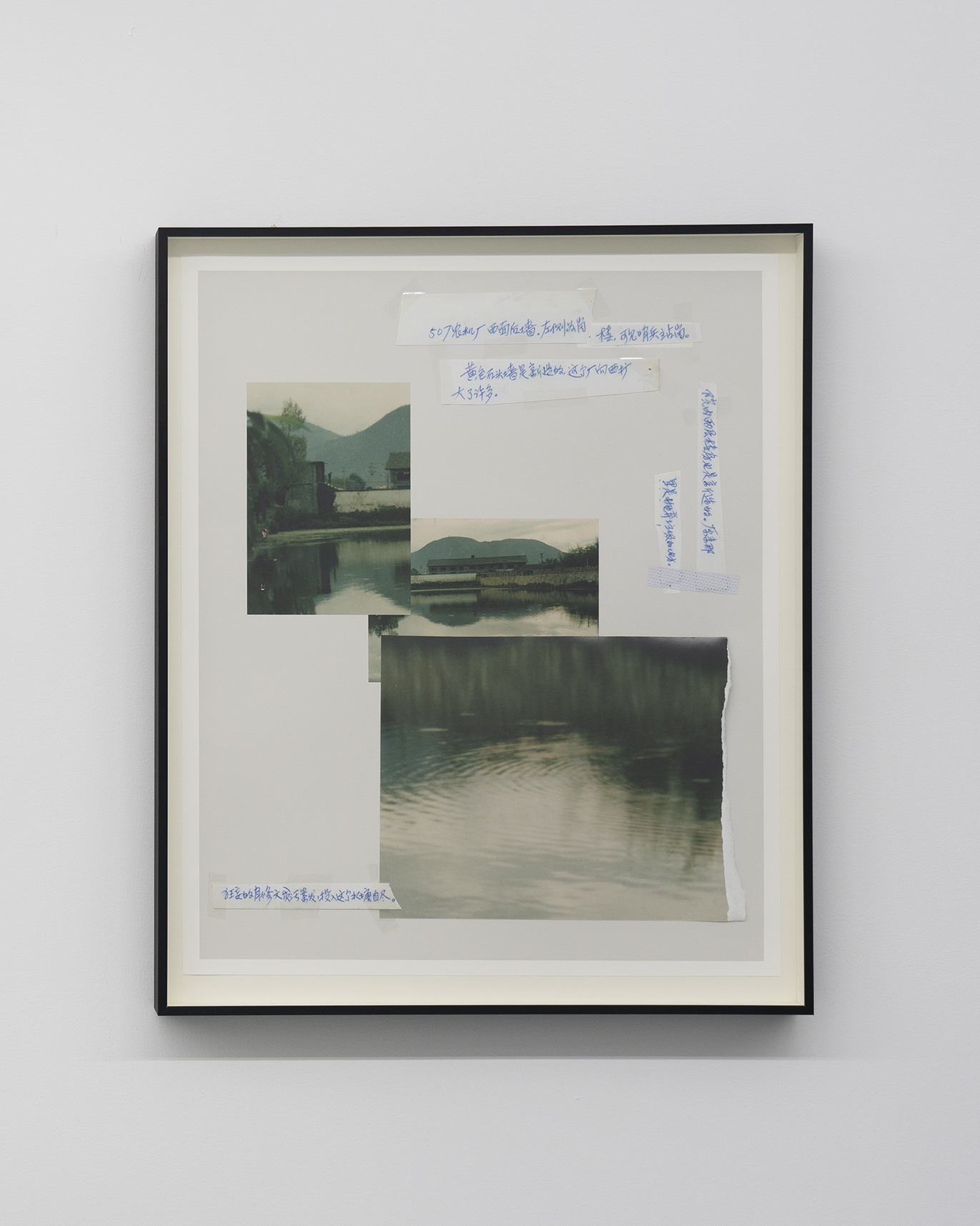 507农机厂西面后墙,左侧为岗楼可见哨兵站岗。
507农机厂西面后墙,左侧为岗楼可见哨兵站岗。
The western rear wall of the 507 factory, with the guardhouse on the left, where a standing sentry can be seen.
黄色石头墙是新造的,这个厂向西扩大了许多。
The yellow stone wall is newly built and this factory has been expanded westward.
院内两层楼房是新造的。原来那是抛弃垃圾的地方。
The two-storey building in the yard is newly built. formerly a site for dumping the garbage.
狂妄的肖修文贪污案发,投入这个池塘自尽。
The arrogant Xiao Xiuwen was convicted of embezzlement and threw himself into this pond.
 这是507农机厂的北墙。
这是507农机厂的北墙。
This is the north wall of the 507 Factory.
淡色墙是1972年的高度。自从我越狱后又加高,显示深色。
The light coloured wall marked its height in 1972. Since my jailbreak it was raised again, show in a darker colour.
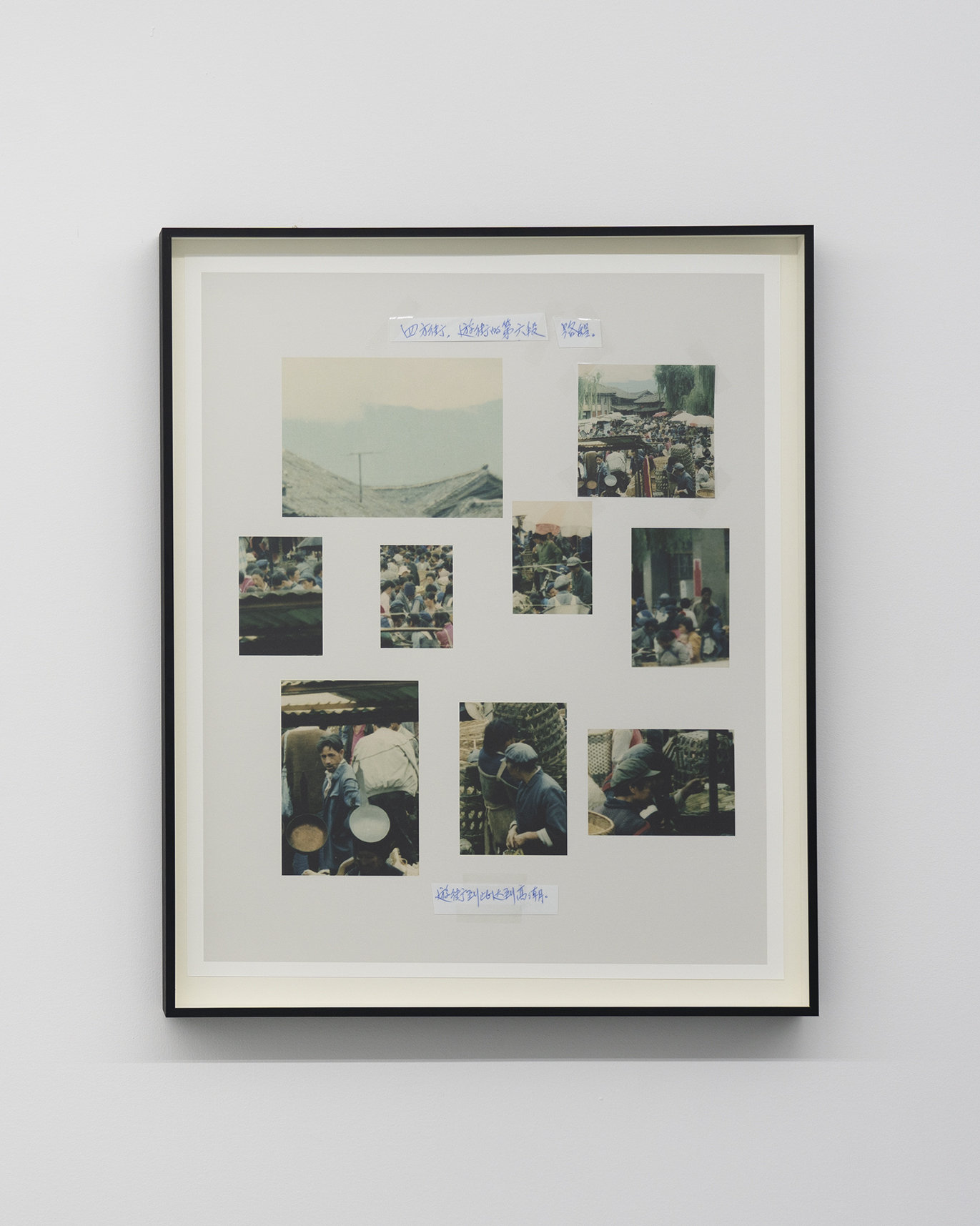 四方街,游行的第六段路程。
四方街,游行的第六段路程。
Si Fang(Four Square) Street, the sixth part of the parade.
游街到此处达到高潮。
The parade culminated here.
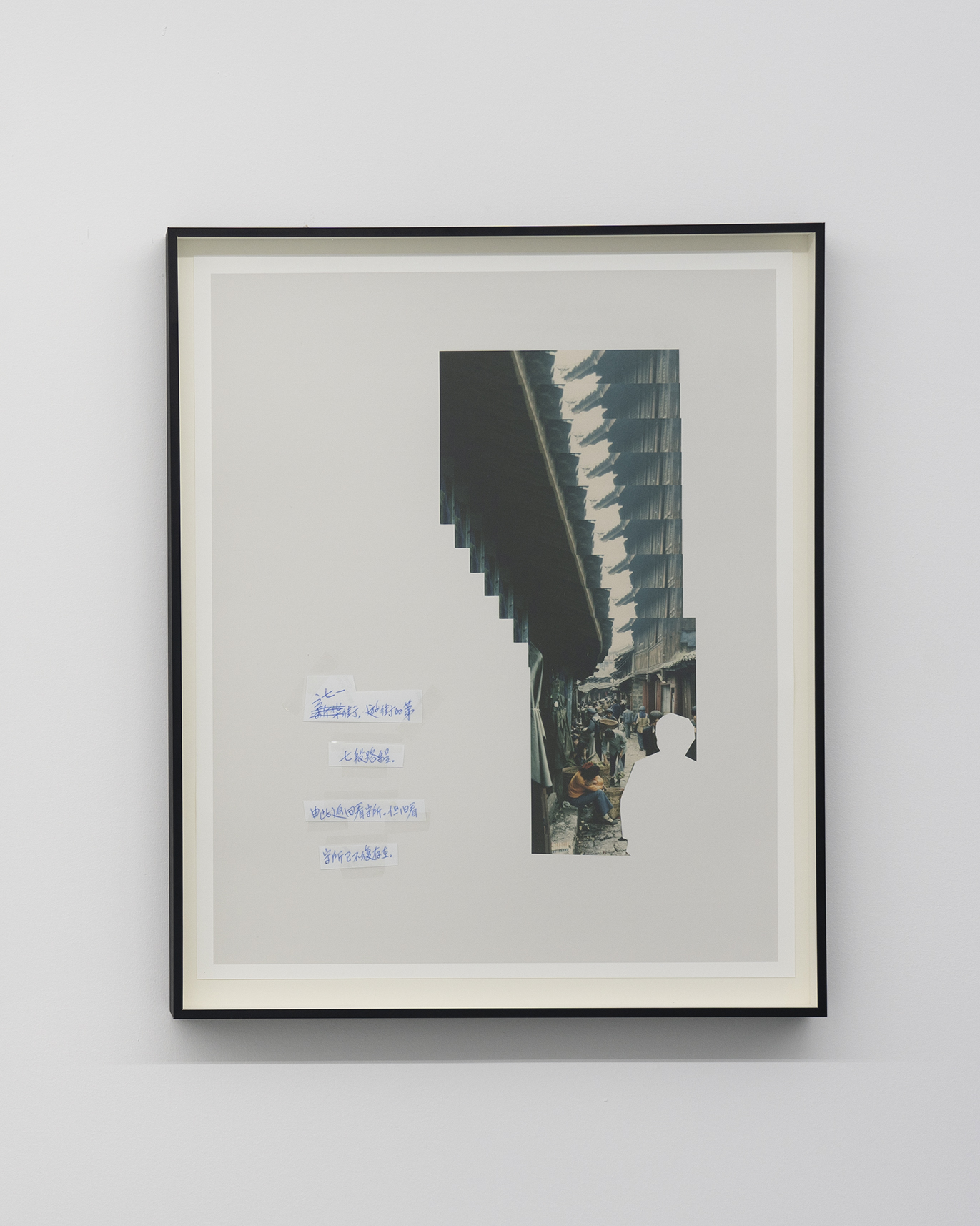 七一街,游行的第七段路程。
七一街,游行的第七段路程。
Qi Yi(July 1st )Street, the last part of the parade.
由此返回看守所。但旧看守所已不复存在。
From here,i was led back to the Detention House. However, the old Detention House no longer exists.